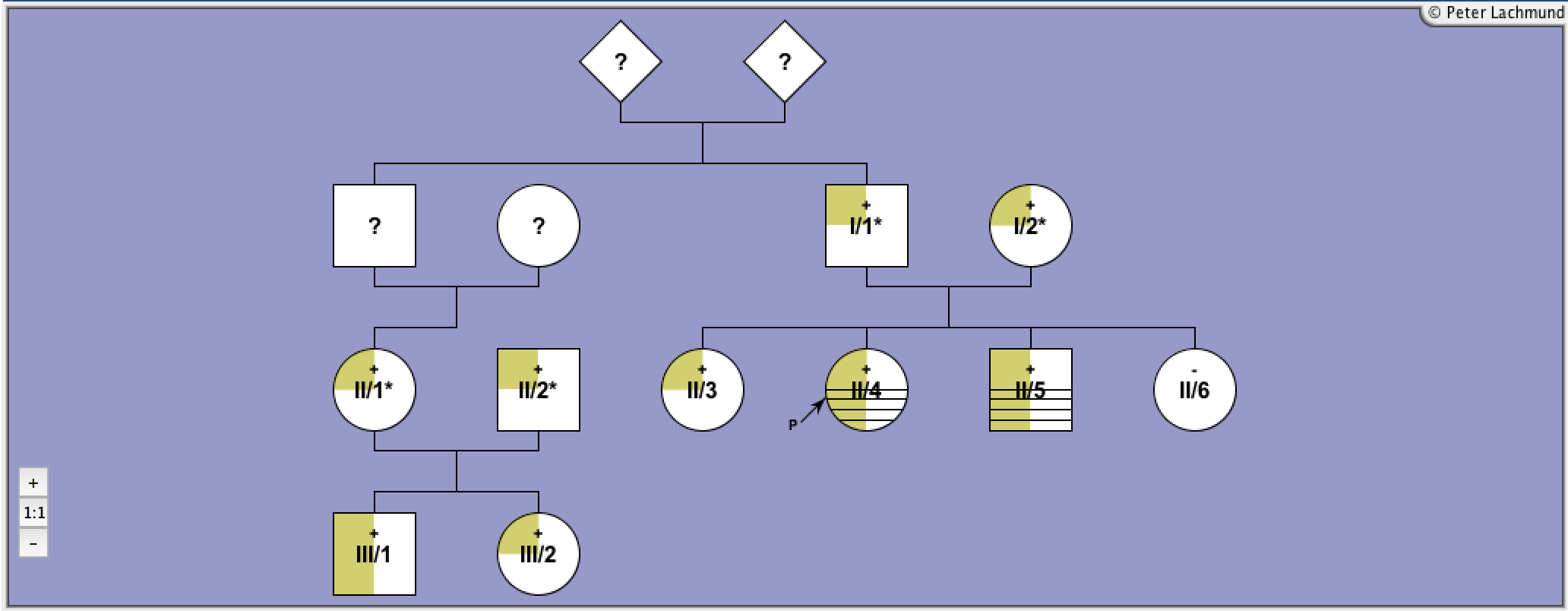Details Of Published TSH Receptor Mutation
Ala 593 Val
c.1778C>TInactivating TSH Receptor Mutation
Type
loss
Manifestation
family
Exon
10
Legend:

Male

Female

Unknown

Deceased
+
Mutation
-
Wild-Type

Heterozygous

Heterozygous

Compound Heterozygous

Homozygous

Hypothyroid

Hypoplastic Gland + Hypothyroid
P
Index Patient
Molecular Characteristics:
alternative splicing
homozygous II/5, II/5 and III/1
I/1* and I/2*, II/1* and II/2* are consanguineous parents, Turkish origin
homozygous II/5, II/5 and III/1
I/1* and I/2*, II/1* and II/2* are consanguineous parents, Turkish origin
Clinical Features:
diagnosis: II/4 (proposita), 7yrs 9 months, hair loss, normal thyroid size
II/5 (brother): diagnosis at 6yrs 3months,
mild primary hypothyroidism
Ab negative, normal thyroid size
III/1 (first cousin of II/4 and II/5): diagnosis neonatal
II/5 (brother): diagnosis at 6yrs 3months,
mild primary hypothyroidism
Ab negative, normal thyroid size
III/1 (first cousin of II/4 and II/5): diagnosis neonatal
Treatment:
L-T4
Functional Characteristics:
cAMP
(basal)
(basal)
cAMP
(TSH)
(TSH)
IP
(basal)
(basal)
IP
(TSH)
(TSH)
TSH-Binding
Cell Surface Expression
Prevalence
LRA
Ref
1
Legend:
cAMP (basal): basal in vitro cAMP production of mutant over wild-type TSHR
cAMP (TSH): maximal in vitro cAMP production of mutant over wild-type TSHR
IP (basal): basal in vitro IP production of mutant over wild-type TSHR
IP (TSH): maximal in vitro IP production of mutant over wild-type TSHR
TSH-binding: maximal TSH-binding compared to the wild-type TSHR
Cell surface expression: cell surface expression of mutant compared to WT-TSHR
LRA: linear regression analysis (LRA) of constitutive activity as a function of TSHR expression determined by 125I-bTSH binding or FACS analysis compared to the wild-type TSHR
Prevalence: Prevalence of (somatic and germline) activating mutations*
Ref: Reference for functional characterization
Child: Found in children.
Reference 1:
Fricke-Otto et al.
Exp Clin Endocrinol Diabetes 113:582-585.
Mild congenital primary hypothyroidism in a Turkish family caused by a homozygous missense thyrotropin receptor (TSHR) gene mutation (A593 V).
2005

